Home > Research >
Supernova and Merger Publications >

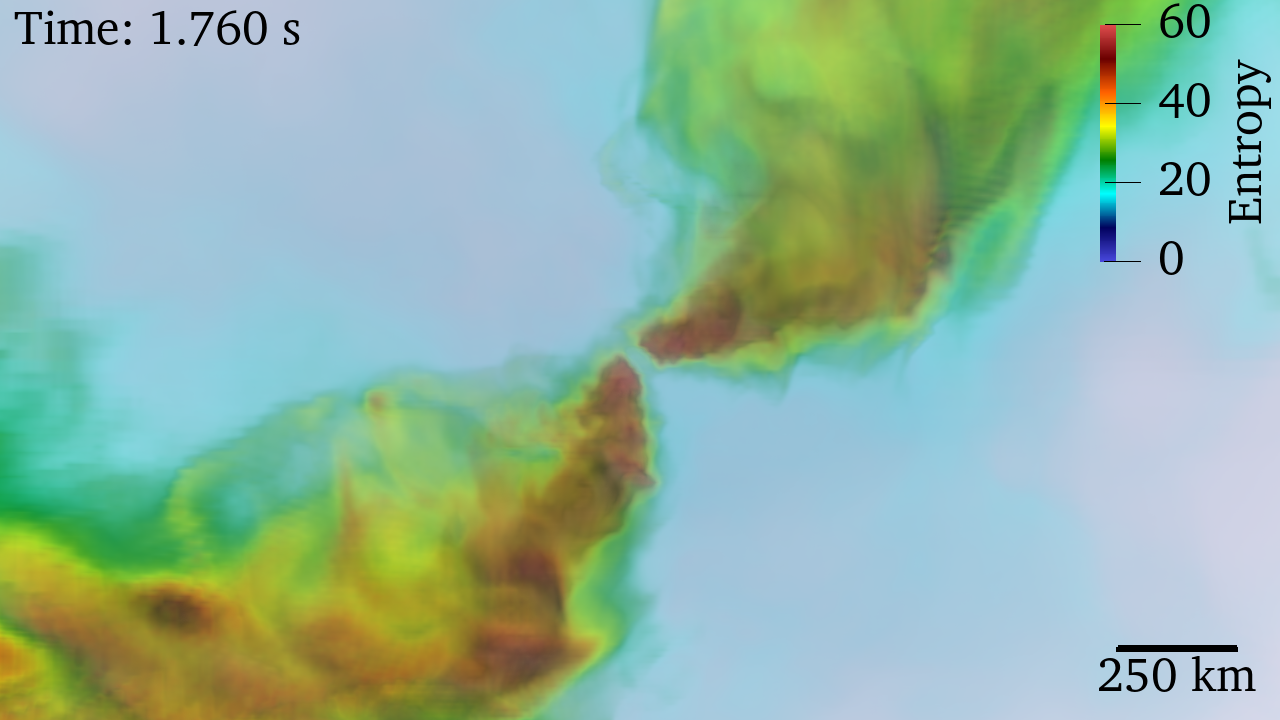 An animation of a simulation of a 40-solar-mass progenitor star first exploding vigorously and then
giving birth to a black hole after ~1.76 seconds after bounce. This movie also follows the
post-black-hole formation epoch to 8.8 seconds after bounce. Graphics: Joe Insley/ALCF;
Publication: A. Burrows et al. 2023 - "Black-Hole Formation Accompanied by the Supernova
Explosion of a 40-Msun Progenitor".
An animation of a simulation of a 40-solar-mass progenitor star first exploding vigorously and then
giving birth to a black hole after ~1.76 seconds after bounce. This movie also follows the
post-black-hole formation epoch to 8.8 seconds after bounce. Graphics: Joe Insley/ALCF;
Publication: A. Burrows et al. 2023 - "Black-Hole Formation Accompanied by the Supernova
Explosion of a 40-Msun Progenitor".
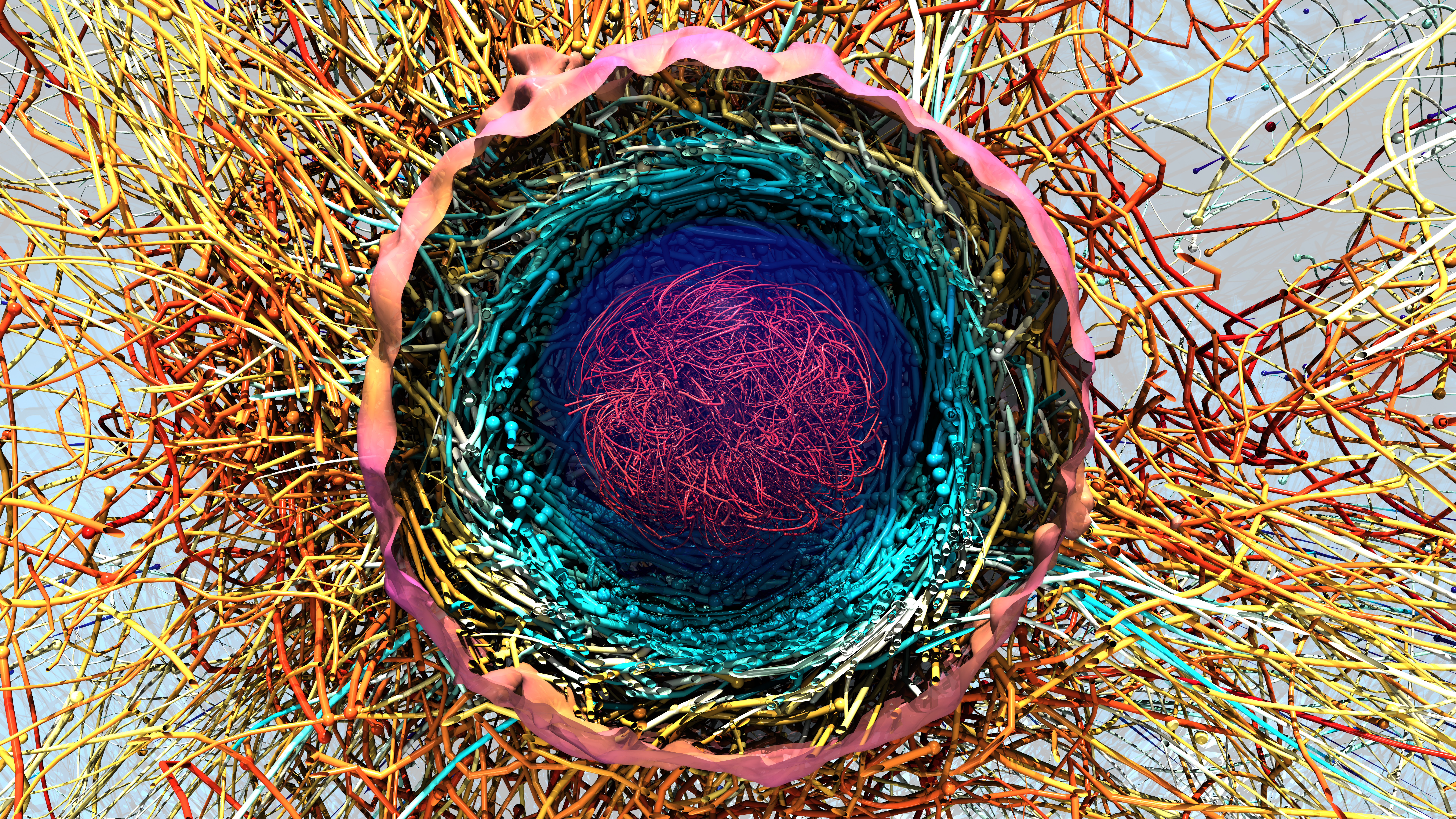 An animation of the results of a state-of-the-art 3D simulation
of supernova explosion and neutron-star birth. There is a Techno accompaniment in sound.
Highlighted among others things is the
deep core that is shrinking after explosion due to neutrino cooling and
deleptonization on its way to becoming a cold, compact neutron star. In evidence is
inner proto-neutron star convection, perhaps the site of magnetic dynamo action
that can turn a pulsar into a magnetar. The final frames are of the blast
wave moving at ~10,000 km/s that cocoons the newly-birthed neutron star.
(Credit: the Princeton Supernova Theory group; Graphics: Joe Insley/ALCF;
Publication: A. Burrows et al. 2020). The sphere in the close-up is an
isodensity surface at 109.5 gm/cc colored by Ye.
An animation of the results of a state-of-the-art 3D simulation
of supernova explosion and neutron-star birth. There is a Techno accompaniment in sound.
Highlighted among others things is the
deep core that is shrinking after explosion due to neutrino cooling and
deleptonization on its way to becoming a cold, compact neutron star. In evidence is
inner proto-neutron star convection, perhaps the site of magnetic dynamo action
that can turn a pulsar into a magnetar. The final frames are of the blast
wave moving at ~10,000 km/s that cocoons the newly-birthed neutron star.
(Credit: the Princeton Supernova Theory group; Graphics: Joe Insley/ALCF;
Publication: A. Burrows et al. 2020). The sphere in the close-up is an
isodensity surface at 109.5 gm/cc colored by Ye.
 Same as above, but with an orchestral accompaniment.
An animation of the results of a state-of-the-art 3D simulation.
The YouTube video can be found at: https://www.youtube.com/watch?v=0DSk1wPc_cE
.
Same as above, but with an orchestral accompaniment.
An animation of the results of a state-of-the-art 3D simulation.
The YouTube video can be found at: https://www.youtube.com/watch?v=0DSk1wPc_cE
.
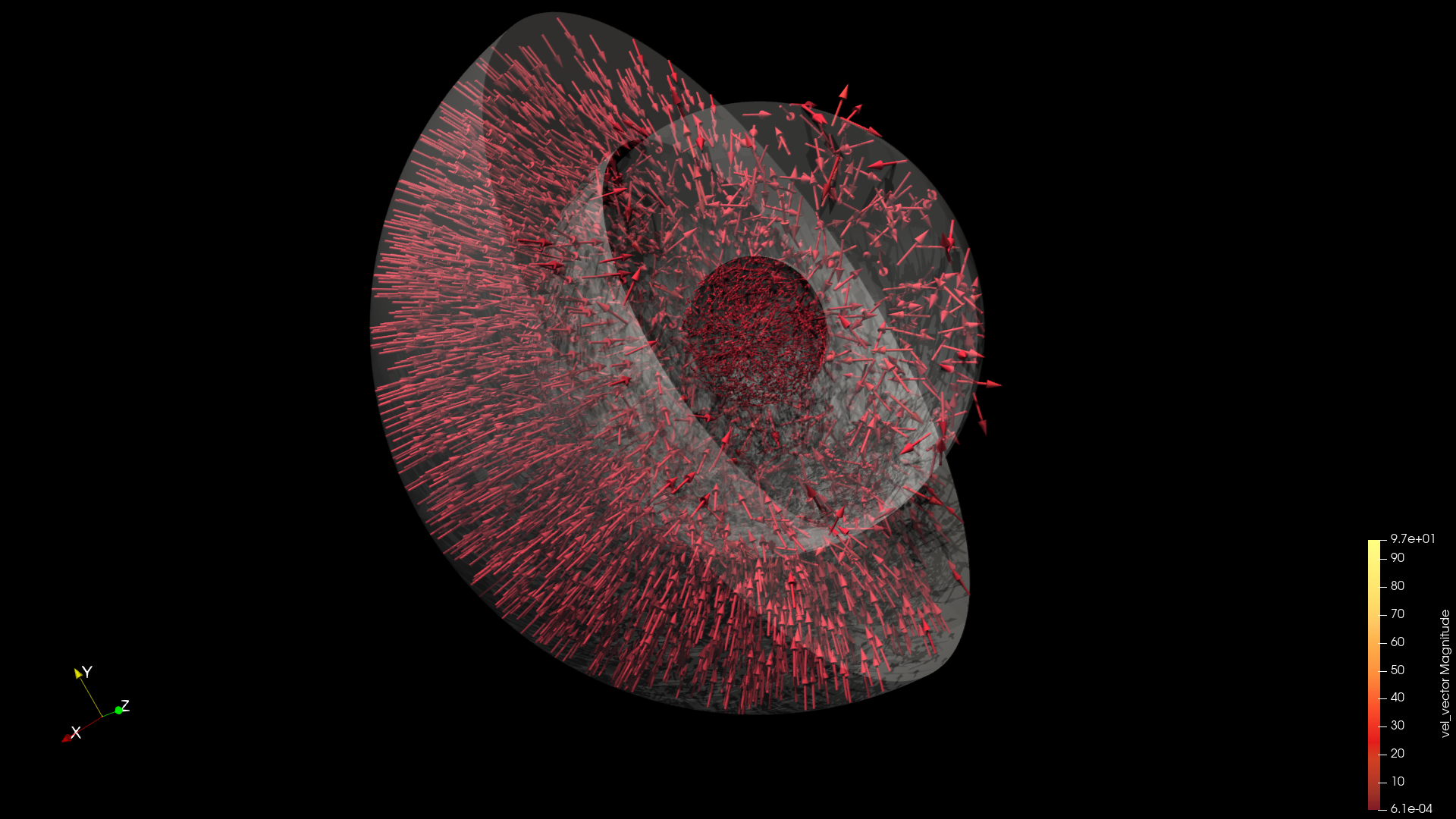 Tracer particles sourced in the proto-neutron-star convection region for a 25-solar-mass model,
turbulence interior to the shock.
The outer sphere is an isodensity surface at 1011 gm/cc colored by Ye.
Tracer particles sourced in the proto-neutron-star convection region for a 25-solar-mass model,
turbulence interior to the shock.
The outer sphere is an isodensity surface at 1011 gm/cc colored by Ye.
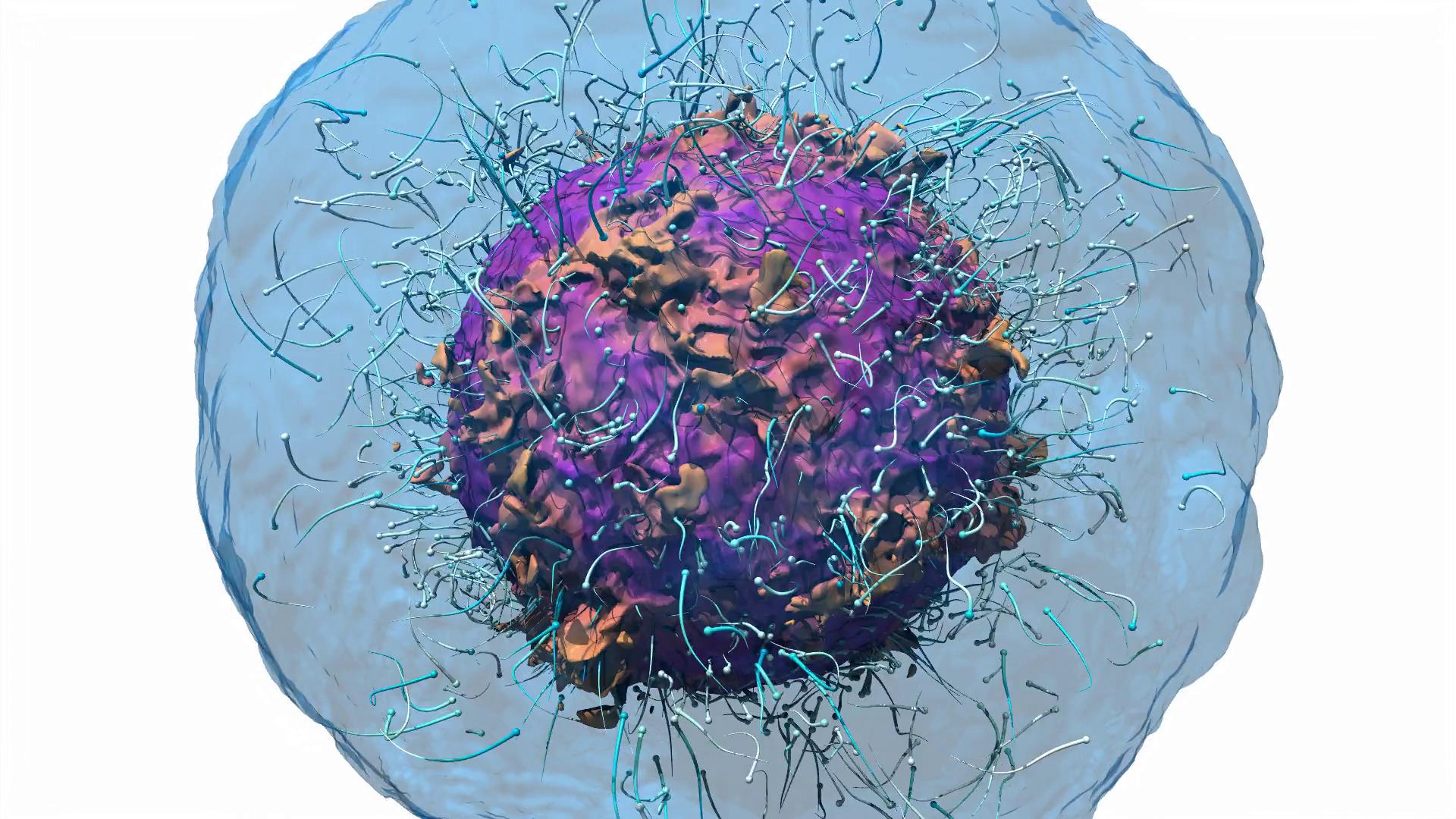 Tracer particles sourced in the core, showing the PNS and turbulence interior to the shock.
The PNS is an isodensity surface, colored by Ye.
Tracer particles sourced in the core, showing the PNS and turbulence interior to the shock.
The PNS is an isodensity surface, colored by Ye.
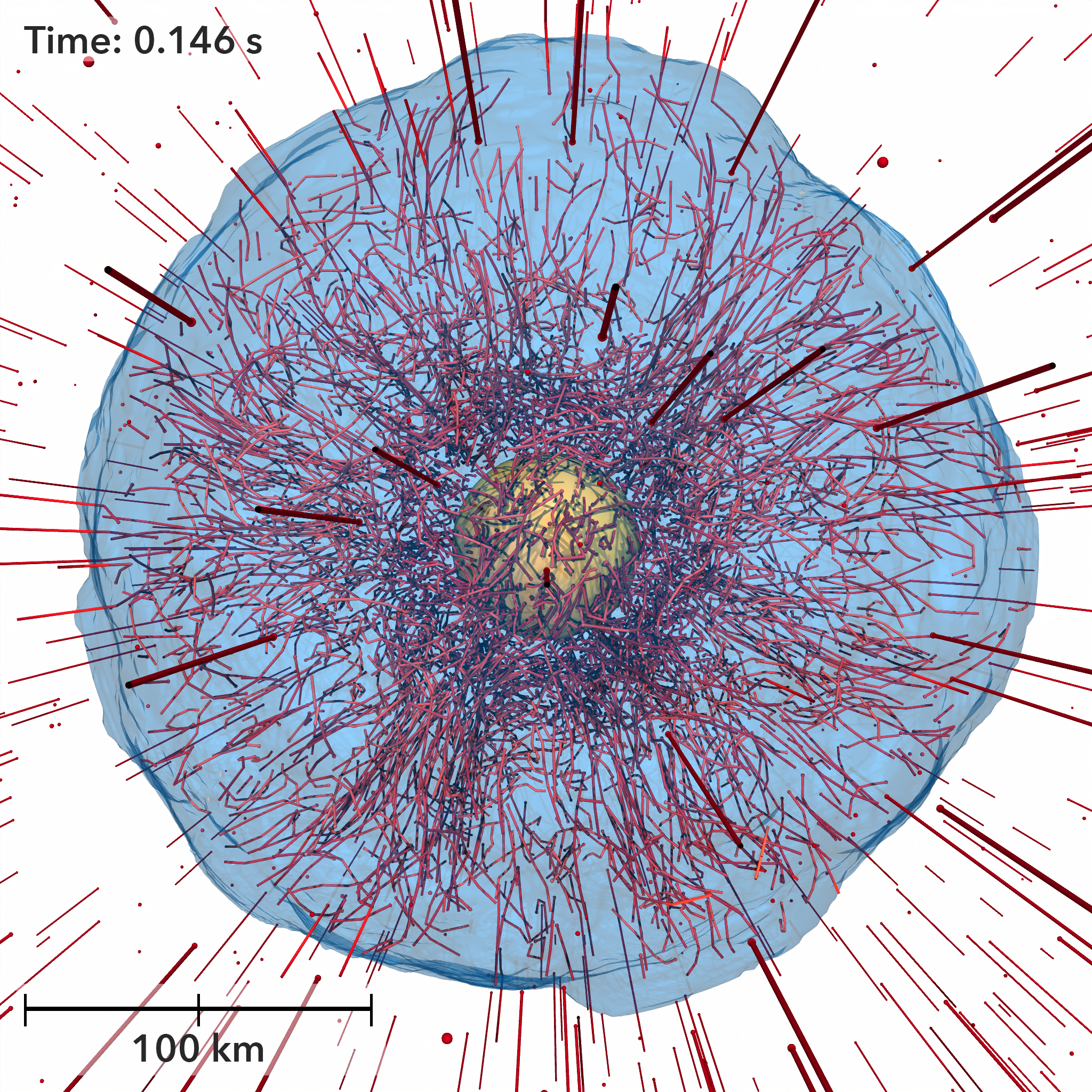 Tracer particles depicting infall, turbulence, and explosion of a
19-solar-mass progenitor in 3D The inner PNS is painted in Ye
and the trajectiries are painted in entropy.
Tracer particles depicting infall, turbulence, and explosion of a
19-solar-mass progenitor in 3D The inner PNS is painted in Ye
and the trajectiries are painted in entropy.
 Explosion of a 25-solar-mass progenitor in 3D, using the latest
implementation of Fornax and plotting isoentropy
contours painted with Ye.
Explosion of a higher-resolution 19-solar-mass progenitor in 3D
using the state-of-the-art simulation code Fornax. Plotted
are isoentropy surfaces colored by electron fraction, Ye.
The gray veil is the shock surface.
Explosion of a 16-solar-mass progenitor in 3D, using the latest implementation of Fornax,
but this time plotting the electron fraction, Ye.
Explosion of a 9-solar-mass progenitor in 3D, using the latest implementation of Fornax
and rendering entropy.
Merging of two neutron stars,
using the WhiskyTHC code of D. Radice and collaborators.
Pathline trajectories during stalled-shock phase.
Shock response to rising bubbles and the onset of explosion.
2D slice of the same (just above) 3D explosion, using CASTRO and simple transfer.
Rayleigh-Taylor test of the Fornax code, using 512x512x1024 Cartesian zoning.
A rotating camera view of a 3D supernova explosion. Note the emergence of the neutron star.
A rotating camera view of a frozen anisotropic entropy structure behind the shock.
A rotating camera view of a instantaneous heating rate in the gain region behind the stalled shock.
Explosion of a 25-solar-mass progenitor in 3D, using the latest
implementation of Fornax and plotting isoentropy
contours painted with Ye.
Explosion of a higher-resolution 19-solar-mass progenitor in 3D
using the state-of-the-art simulation code Fornax. Plotted
are isoentropy surfaces colored by electron fraction, Ye.
The gray veil is the shock surface.
Explosion of a 16-solar-mass progenitor in 3D, using the latest implementation of Fornax,
but this time plotting the electron fraction, Ye.
Explosion of a 9-solar-mass progenitor in 3D, using the latest implementation of Fornax
and rendering entropy.
Merging of two neutron stars,
using the WhiskyTHC code of D. Radice and collaborators.
Pathline trajectories during stalled-shock phase.
Shock response to rising bubbles and the onset of explosion.
2D slice of the same (just above) 3D explosion, using CASTRO and simple transfer.
Rayleigh-Taylor test of the Fornax code, using 512x512x1024 Cartesian zoning.
A rotating camera view of a 3D supernova explosion. Note the emergence of the neutron star.
A rotating camera view of a frozen anisotropic entropy structure behind the shock.
A rotating camera view of a instantaneous heating rate in the gain region behind the stalled shock.
 Two movies of the same explosion, one for an isoentropy surface and the other employing volume-rendering.
The latter reveals the presence and rotation of the residual neutron star.
Two movies of the same explosion, one for an isoentropy surface and the other employing volume-rendering.
The latter reveals the presence and rotation of the residual neutron star.
Home > Research >
Supernova and Merger Publications
Updated on: October 31, 2019
 An animation of a simulation of a 40-solar-mass progenitor star first exploding vigorously and then
giving birth to a black hole after ~1.76 seconds after bounce. This movie also follows the
post-black-hole formation epoch to 8.8 seconds after bounce. Graphics: Joe Insley/ALCF;
Publication: A. Burrows et al. 2023 - "Black-Hole Formation Accompanied by the Supernova
Explosion of a 40-Msun Progenitor".
An animation of a simulation of a 40-solar-mass progenitor star first exploding vigorously and then
giving birth to a black hole after ~1.76 seconds after bounce. This movie also follows the
post-black-hole formation epoch to 8.8 seconds after bounce. Graphics: Joe Insley/ALCF;
Publication: A. Burrows et al. 2023 - "Black-Hole Formation Accompanied by the Supernova
Explosion of a 40-Msun Progenitor".

 An animation of the results of a state-of-the-art 3D simulation
of supernova explosion and neutron-star birth. There is a Techno accompaniment in sound.
Highlighted among others things is the
deep core that is shrinking after explosion due to neutrino cooling and
deleptonization on its way to becoming a cold, compact neutron star. In evidence is
inner proto-neutron star convection, perhaps the site of magnetic dynamo action
that can turn a pulsar into a magnetar. The final frames are of the blast
wave moving at ~10,000 km/s that cocoons the newly-birthed neutron star.
(Credit: the Princeton Supernova Theory group; Graphics: Joe Insley/ALCF;
Publication: A. Burrows et al. 2020). The sphere in the close-up is an
isodensity surface at 109.5 gm/cc colored by Ye.
An animation of the results of a state-of-the-art 3D simulation
of supernova explosion and neutron-star birth. There is a Techno accompaniment in sound.
Highlighted among others things is the
deep core that is shrinking after explosion due to neutrino cooling and
deleptonization on its way to becoming a cold, compact neutron star. In evidence is
inner proto-neutron star convection, perhaps the site of magnetic dynamo action
that can turn a pulsar into a magnetar. The final frames are of the blast
wave moving at ~10,000 km/s that cocoons the newly-birthed neutron star.
(Credit: the Princeton Supernova Theory group; Graphics: Joe Insley/ALCF;
Publication: A. Burrows et al. 2020). The sphere in the close-up is an
isodensity surface at 109.5 gm/cc colored by Ye. Tracer particles sourced in the proto-neutron-star convection region for a 25-solar-mass model,
turbulence interior to the shock.
The outer sphere is an isodensity surface at 10
Tracer particles sourced in the proto-neutron-star convection region for a 25-solar-mass model,
turbulence interior to the shock.
The outer sphere is an isodensity surface at 10 Tracer particles sourced in the core, showing the PNS and turbulence interior to the shock.
The PNS is an isodensity surface, colored by Ye.
Tracer particles sourced in the core, showing the PNS and turbulence interior to the shock.
The PNS is an isodensity surface, colored by Ye. Tracer particles depicting infall, turbulence, and explosion of a
19-solar-mass progenitor in 3D The inner PNS is painted in Ye
and the trajectiries are painted in entropy.
Tracer particles depicting infall, turbulence, and explosion of a
19-solar-mass progenitor in 3D The inner PNS is painted in Ye
and the trajectiries are painted in entropy. Explosion of a 25-solar-mass progenitor in 3D, using the latest
implementation of Fornax and plotting isoentropy
contours painted with Ye.
Explosion of a 25-solar-mass progenitor in 3D, using the latest
implementation of Fornax and plotting isoentropy
contours painted with Ye. Two movies of the same explosion, one for an isoentropy surface and the other employing volume-rendering.
The latter reveals the presence and rotation of the residual neutron star.
Two movies of the same explosion, one for an isoentropy surface and the other employing volume-rendering.
The latter reveals the presence and rotation of the residual neutron star.